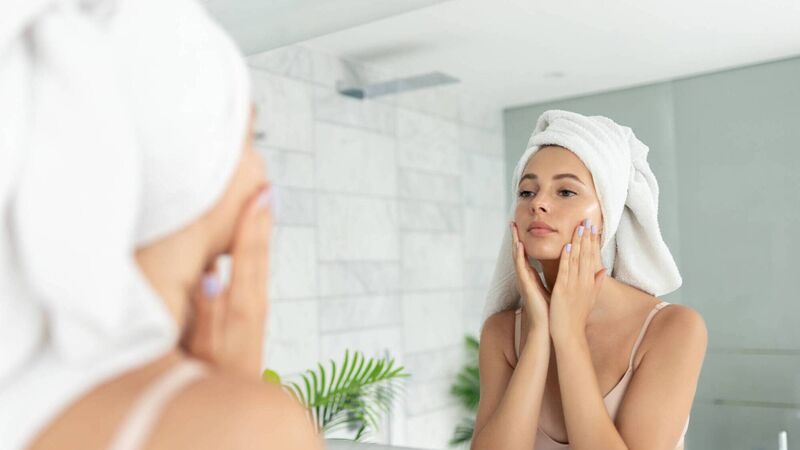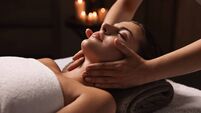5 things you need to know about retinol, including strengths and side-effects

Pic: iStock
Retinol is a powerhouse beauty ingredient — but it’s a tricky one too. Here, Professor Caitríona Ryan, consultant dermatologist at the Institute of Dermatologists ( instituteofdermatologists.ie), tells us five essential things to know if we’re going to incorporate retinol into our beauty routine.
Retinol is a Vitamin A derivative and it’s sold over-the-counter and on prescription. Often referred to as a ‘skin active’, celebrities such as Nicole Kidman, Paris Hilton, and Jennifer Lopez have lauded its benefits.
Ryan says it’s a multi-tasker: “It refines and improves the skin’s texture. This is because it increases skin cell turnover, sloughing away dead cells, so new cells can generate, resulting in smoother, more even skin.”
It’s one of the most powerful things to induce collagen in the skin — which Ryan says we’ve known since the 1980s: “When we lose collagen, it causes fine lines, wrinkles and saggy skin. Over five years around perimenopause, we lose 30% of our collagen. Retinol helps increase collagen production and improves skin elasticity.”
Retinol normalises skin pigment and reduces pore size — it has an anti-acne action. “It clears clogged pores, so for those with oily or acne-prone skin, it’s a very effective blemish-fighting treatment. It acts as an exfoliant and balances sebum-production so it shrinks the pores, preventing them getting clogged/inflamed.”
Retinol helps reduce signs of ageing and future-proofs your skin, Ryan says, adding that it also has a mild anti-skin cancer action. “Outside of using sunblock, it’s one of the best things you can do for your skin.”
Retinol should be used with caution, especially if you have sensitive or Rosacea-prone skin, Ryan counsels. “Stronger isn’t necessarily better. Always start with a low-strength retinol — between 0.3% to 1% — and aim to increase frequency of use over time, based on how your skin responds and what your skin’s needs are.”
According to research from 2015, a “significant reduction” in wrinkles was seen in participants who used retinol for 12 weeks. And a 2019 study found that wrinkles around the eyes and on the neck improved in individuals who used retinol for eight weeks.
Ryan has seen people experience improvement — e.g. in skin texture and pore size — after six weeks. And it’s never too late to start using the ingredient, Ryan says. “People start using it in their teens in the US.”
The most common are dry skin, peeling, flaking, irritation and redness: “If you experience these, reduce your use of retinol or take a break until the symptoms settle.”
Ryan says people whose skin is 'breakout-prone' may experience purging — an excessive increase in breakouts as skin adjusts to retinol. Naturally, you might worry that this means it isn’t working, but Ryan says in fact it’s a sign that it is. “The purging occurs because the retinol speeds up cell turnover and clears the debris that’s under the surface.”
Ryan recommends using every third night to begin with and to continue this frequency for a month: “If your skin isn’t getting too dry, move to every second night for a month. Gradually increase to every night if needed, and if your skin gets irritated reduce the frequency.”
Retinol should always be used at night to reduce chances of UV interference and to give your skin a chance to recover while you sleep. And of course, very high UVA and UVB protection should be a key part of any daily skincare regime — but it’s an absolute must-have when using retinol because a side-effect is increased sun-sensitivity. Ryan warns that retinol is photo-degraded by light so it’s most important to wear sunblock during the day. Experts recommend using factor 50.
And if you’ve got sensitive skin, you can use retinol but of a lower percentage strength. Ryan advises using retinol cream if you’ve dry/sensitive skin and a retinol serum if your skin is oily.
Don’t be too heavy-handed. Remember: with retinol less is more, so use a pea-sized amount. After cleansing and toning, apply all over your face but avoid using it too close to the lash line and around the mouth/creases of the nose. “These are areas of the face that can get a bit more irritated,” explains Ryan, adding that you should also avoid using it around your eyes unless it’s a product specifically formulated for the eyes.
“If your retinol is a serum, apply it to skin before moisturising. If the retinol is within your moisturiser, it should be the final step in your nightly skincare routine. It’s important to moisturise while using retinol to adequately hydrate and protect your skin barrier.”










